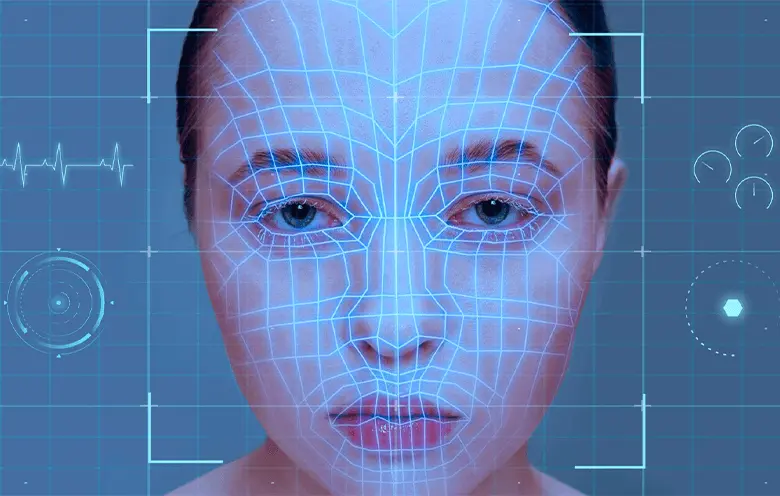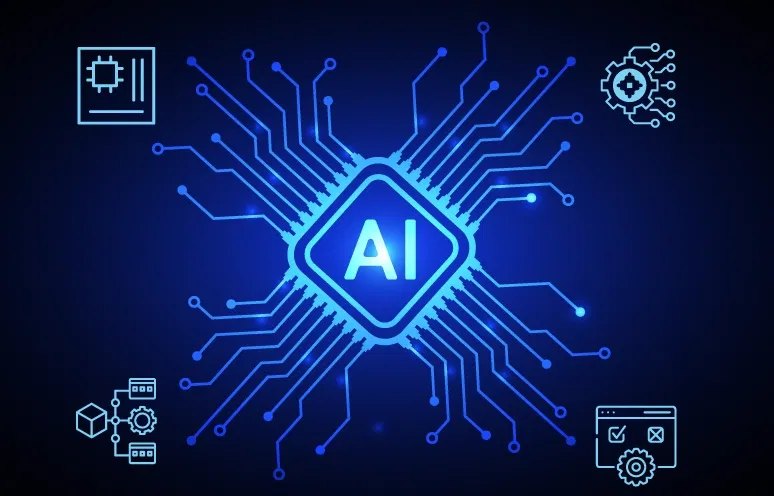The output of computer vision models significantly depends on the quality of training data. But what if you don’t have enough data? Or what if your data isn’t of the highest quality?
This is where data augmentation comes into the picture. Data augmentation is a technique that can be used to artificially increase the size and diversity of your training data.
One way to perform data augmentation is through generative AI integration. You can use it to create realistic new images, videos and other types of data. This is especially useful for computer vision models, as it allows you to create new training data that is specifically tailored to your needs.
Two out of three (67%) say generative AI will help them get more out of other technology investments, like other AI and machine learning models.
– A survey by Salesforce
Generative AI uses neural networks to learn the underlying patterns and distributions of data and then uses that knowledge to generate new data that is similar to the training data. This can be used to create new and realistic images, videos, music and even text.
In this blog, we will explore the numerous possibilities that the integration of Gen AI and computer vision has to offer.
Understanding generative adversarial networks (GANs)
GANs are a type of generative AI model that consists of two neural networks: a generator and a discriminator. The generator is trained to generate new data, while the discriminator is trained to distinguish between real data and generated data.
Applications of GANs
Image-to-image translation: GANs can be used to translate images from one domain to another, such as translating a black and white image to a color image or translating a photorealistic image to a cartoon image. This can be used to create new types of art and photography and to improve the accessibility of visual content for people with disabilities.
Super-resolution: GANs can be used to upscale images to a higher resolution without losing detail. This is useful for tasks such as restoring old photos or enhancing medical images. This can be used to improve the quality of medical images, satellite imagery and security footage.
Style transfer: GANs can be used to transfer the style of one image to another. For example, you could use a GAN to transfer the style of a Van Gogh painting to a photo of a landscape. This can be used to create new forms of artistic expression and to improve the quality of visual content for marketing and advertising purposes.
You can read more about GANs in our detailed blog: CNNs vs. GANs
Variational autoencoders (VAEs) and image generation
VAEs are a type of generative AI model that consists of two neural networks: an encoder and a decoder. The encoder is trained to compress an image into a latent space, which is a lower-dimensional representation of the image. The decoder is then trained to reconstruct the image from the latent space representation.
Applications of VAEs
Image generation: VAEs can be used to generate new images, such as faces, landscapes and objects. This can be used for a variety of tasks, such as creating new artistic content or generating synthetic data for training computer vision models.
Image reconstruction: VAEs can be used to reconstruct damaged or incomplete images. This can be useful for tasks such as restoring old photos or enhancing medical images.
Image inpainting: VAEs can be used to fill in missing pixels in an image, such as those caused by scratches or damage.
Image denoising: VAEs can be used to remove noise from images. This can be useful for tasks such as improving the quality of low-light images or medical images. This can be used to remove noise from images of astronomical objects and medical images of cells.
Applications of conditional generative models (CGMs) in computer vision:
Conditional generative models are a type of generative model that can generate data that is conditioned on some additional input. CGMs are typically implemented using deep learning neural networks. The neural network is trained to generate data that is similar to the training data but also conditioned on additional input. Various use cases of CGMs include:
Generating images from text descriptions
CGMs can be used to generate realistic images from text descriptions. This is useful for a variety of tasks, such as:
- Creating new artwork and visual content
- Generating realistic images for video games and movies
- Creating new medical images for training and research
- Generating synthetic data for training computer vision models
For example, the DALL-E 2 model can be used to generate realistic images from text descriptions such as “a red panda wearing a tuxedo” or a “photorealistic painting of a cat sitting on a beach.”
Translating images from one domain to another
CGMs can be used to translate images from one domain to another. This is useful for a variety of tasks, such as:
- Translating medical images to English text for diagnosis
- Translating images from one style to another, such as translating a black and white image to a color image or a cartoon image to a realistic image
- Translating images from one language to another, such as translating Japanese signs to English text
For example, the CycleGAN model can be used to translate a black and white image to a color image or a medical image to an English text description.
Editing images
CGMs can be used to edit images in a controlled manner. This is useful for a variety of tasks, such as:
- Restoring damaged or incomplete images
- Enhancing images to improve their quality or visibility
- Creatively editing images to create new artistic styles
For example, the StyleGAN model can be used to change the color of a person’s hair or to add a new object to a scene.
Style transfer with generative AI
Style transfer is a technique that uses generative AI to apply the visual style of one image to another. This is done by training a machine learning model on a set of images with a particular visual style, such as impressionism or pop art. Once the model is trained, it can be used to transfer the visual style to new images.
Here are some popular methods for style transfer with generative AI:
- Neural style transfer: This method uses a GAN to transfer the style of one image to another. It was one of the first methods to demonstrate the potential of generative AI for style transfer.
- AdaIN style transfer: This method uses a VAE to transfer the style of one image to another. It is a more efficient and flexible method than neural style transfer.
- StyleGAN: This method uses a GAN to generate high-quality images with a specific visual style. It can be used to perform style transfer, as well as to generate new images from scratch.
Data augmentation with generative models
Generative models can be used to augment datasets for training computer vision models in several ways. One common approach is to train a generative model on the existing dataset, and then use the generative model to generate new data. The generated data can then be used to augment the existing dataset.
Use cases and benefits of data augmentation with generative models:
- Training computer vision models for object detection and classification: Generative models can be used to generate new data that contains a specific type of object or scene. This can help to improve the performance of computer vision models for object detection and classification.
- Training computer vision models for image segmentation: Generative models can be used to generate new data that contains segmented objects. This can help improve the performance of computer vision models for image segmentation.
- Training computer vision models for medical image analysis: Generative models can be used to generate synthetic medical images. This can be used to train computer vision models for medical image analysis tasks such as disease diagnosis and treatment planning.
Future of Gen AI in computer vision
Generative AI in computer vision has the potential to revolutionize many industries and aspects of our lives. As these two fields continue to converge, we can expect to see several exciting new trends and advancements in the coming years.
Creating new and more realistic training data for computer vision models
Generative AI can be used to create new and more realistic training data for computer vision models. This can help to improve the performance of computer vision models for tasks such as object detection and classification.
Generating synthetic data for training computer vision models in challenging environments
Generative AI can be used to generate synthetic data for training computer vision models in challenging environments, such as low-light conditions or extreme weather. This can help improve the performance of computer vision models in real-world scenarios.
Creating new tools for image and video editing
Generative AI can be used to create new tools for image and video editing. For example, generative AI can be used to create tools that can automatically remove objects from images or videos, or change the style of images and videos.
Integrating generative AI into computer vision for transforming business operations
As generative AI and computer vision continue to be an integral part of organizations, we are witnessing a rapid acceleration in innovation and progress. Future trends in generative AI can create increasingly realistic and diverse content, while computer vision models are becoming more adept at understanding and interpreting visual data with unprecedented accuracy.
At Softweb, we are at the forefront of research and development in generative AI and computer vision. We offer a variety of services and solutions that help businesses leverage the benefits of computer vision. Please feel free to contact our computer vision experts to discuss your use case.



